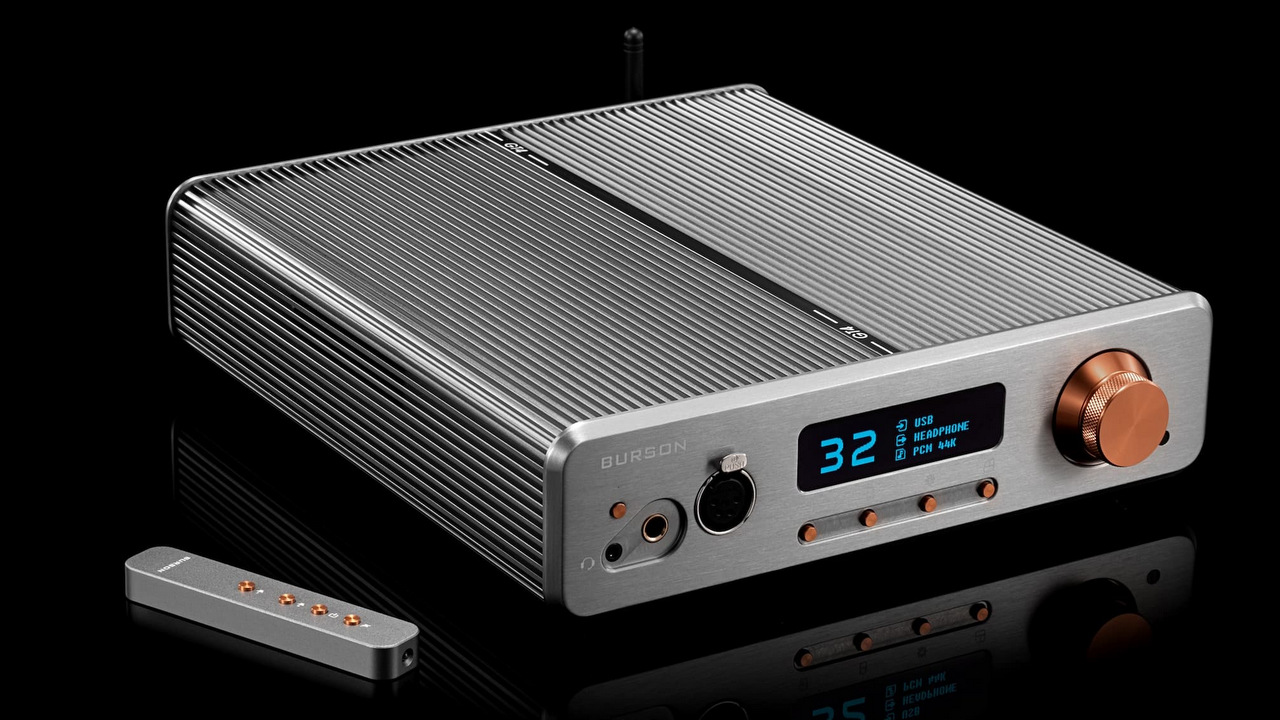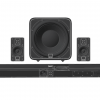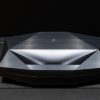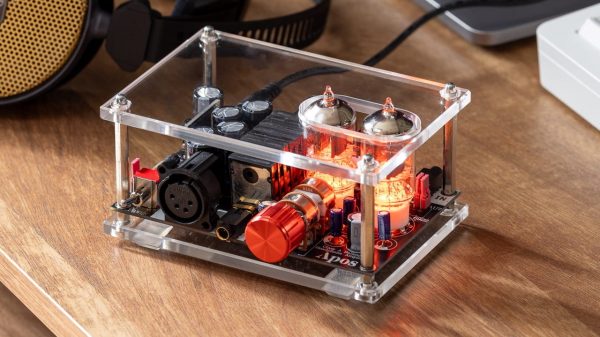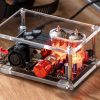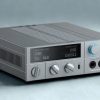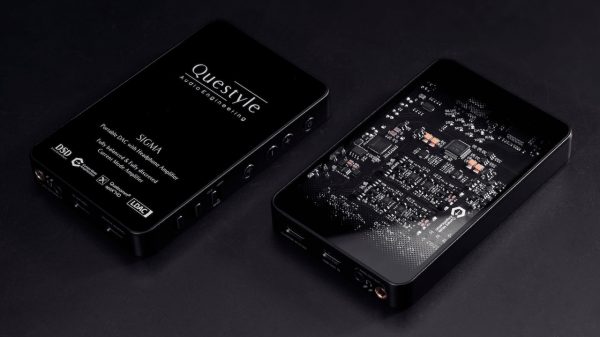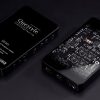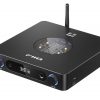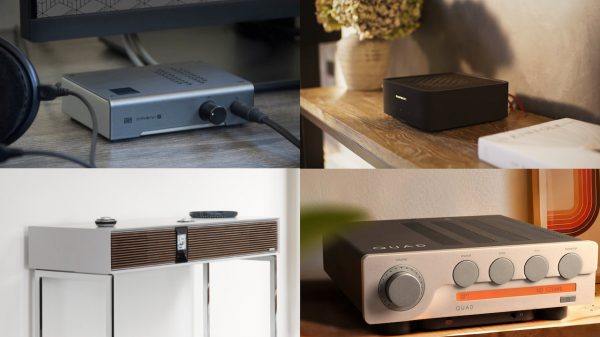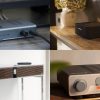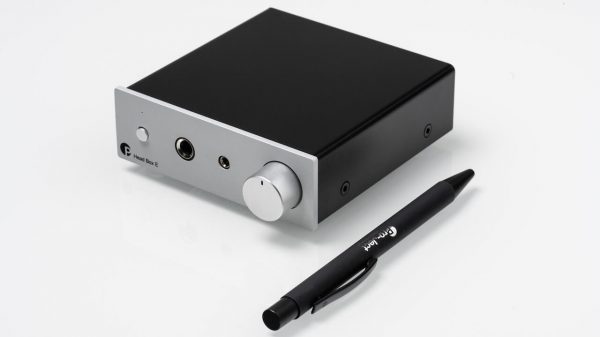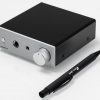Burson Audio may not be the loudest name in the room, but they’ve been quietly building some of the most respected gear in high-end audio since 1996—from the land of Vegemite and wallabies, no less. Based in Melbourne, these Aussies have spent decades cranking out pro-grade kit for musicians and audiophiles alike, building a rep on precision engineering and their early championing of discrete opamps—long before it was trendy.
Their latest beast, the Conductor GT4, is an all-in-one DAC and headphone amp that doesn’t hold back—on features, performance, or price. At just under $3,000, it’s clearly not aiming for the beginner crowd. Instead, it’s gunning straight for the summit-fi crowd who want flagship performance in a single box.
So is the GT4 a real step up, or just a crocodile in crocodile boots? Let’s dig in.
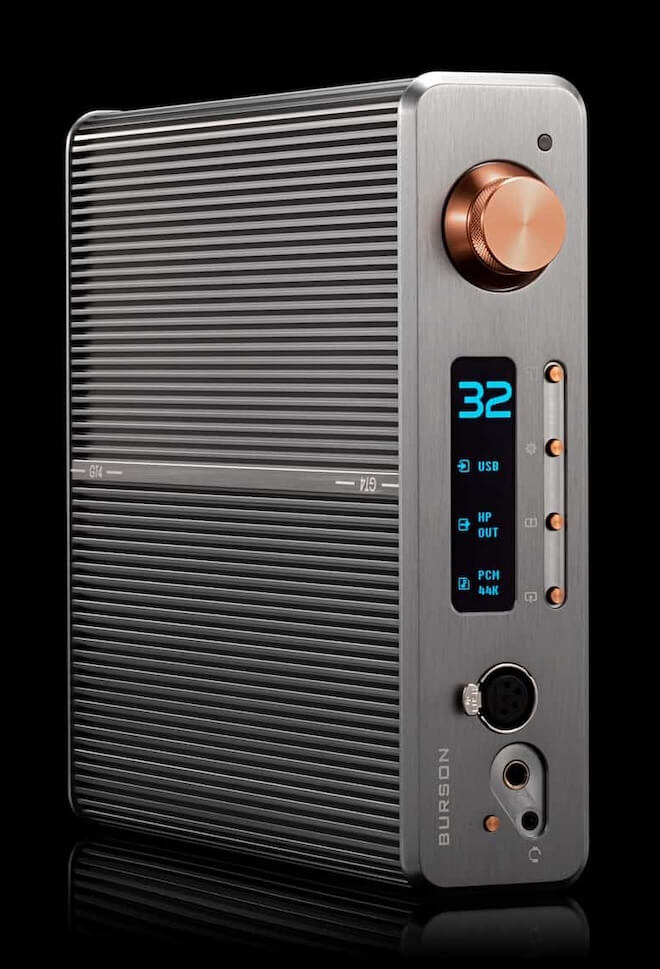
Specifications & Technology That Justify the Price Tag
The Burson Conductor GT4 doesn’t just show up—it arrives like it means business. It comes boxed in not one, not two, but three layers of cardboard armor, with dense polyethylene foam cradling the unit like it’s a crown jewel. You’re not just unboxing gear—you’re unboxing commitment.
This review covers the Deluxe Package, priced at $3,399—$600 more than the Standard Package. What does the extra coin get you? Upgraded V7 Vivid opamps (instead of the V6s) and Silent Power 02 modules (over the 01s), plus the excellent Super Charger 5A Power Supply, which replaces the standard wall-wart. If you’re really feeling flush, there’s a Max Package at $3,999 that includes the Fusion Core 24V/15A for even cleaner power delivery—yes, Burson is serious about power.
Inside the box, you’ll find a bounty of accessories. Most notably, Burson includes a full set of V6 Vivid opamps so you can roll back and forth between generations. You also get three different AC plug adapters, making it travel-ready if your system ever needs to hop the pond.
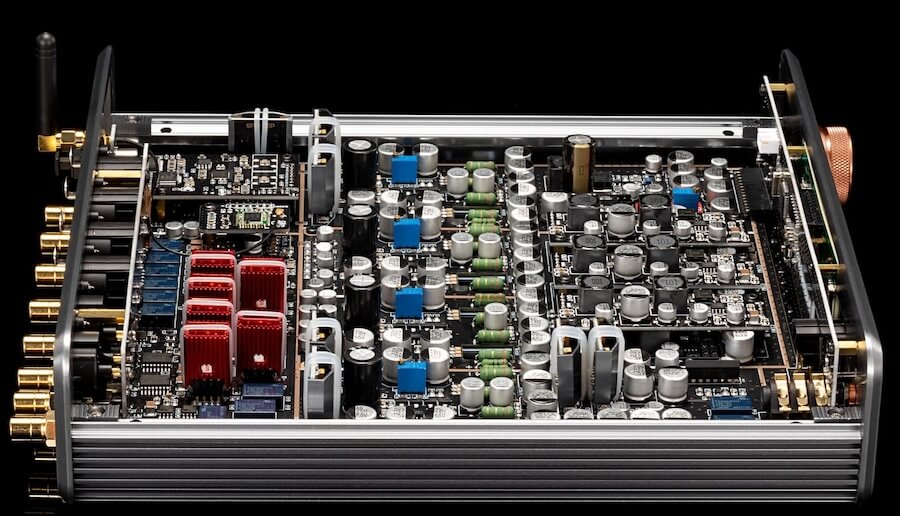
Digital Architecture
At the core of the Conductor GT4’s digital section are dual ESS Sabre ES9038Q2M DAC chips—one per channel. This dual-mono configuration minimizes crosstalk and maximizes dynamic range. The spec sheet backs it up: a channel separation of 143dB and THD+N less than 0.0005% at 1kHz. Clean enough to shave with.
The output stage of the DAC is handled by the flagship V7 Vivid opamps—designed in-house and replacing the already well-regarded V6 Vivids. No opamp rolling roulette here; Burson gives you their best upfront, and then lets you experiment.
Amplifier Section
The amp stage? Fully discrete. Class-A. Fully balanced. And it delivers a skull-rattling 10 watts per channel into 16 ohms via the 4-pin XLR output. That’s not just headroom—that’s a penthouse suite of headroom. If your headphones still sound shy, the problem isn’t your gear—it’s your music.
To feed this beast, Burson’s six in-house-designed MAX Current Power Supplies (MCPS) hum under the hood, supplementing the external supply with super low-noise performance. No switching artifacts, no ripple—just brute clean power.
Digital Inputs & Bluetooth
An XMOS XU-316 chip handles USB duties, giving the GT4 support for native DSD512 and PCM up to 768kHz. Your hi-res library is safe here.
For Bluetooth, Burson included the Qualcomm CSR8675 chip, which means you get LDAC and aptX HD—but notably not aptX Lossless. Still, for wireless duties, it’s solid. But let’s be honest—if you’re spending over $3K, you’re likely sticking to coax, optical, or USB for serious listening.
Up next: Design & Build—and spoiler alert: it’s not just a pretty aluminum face.
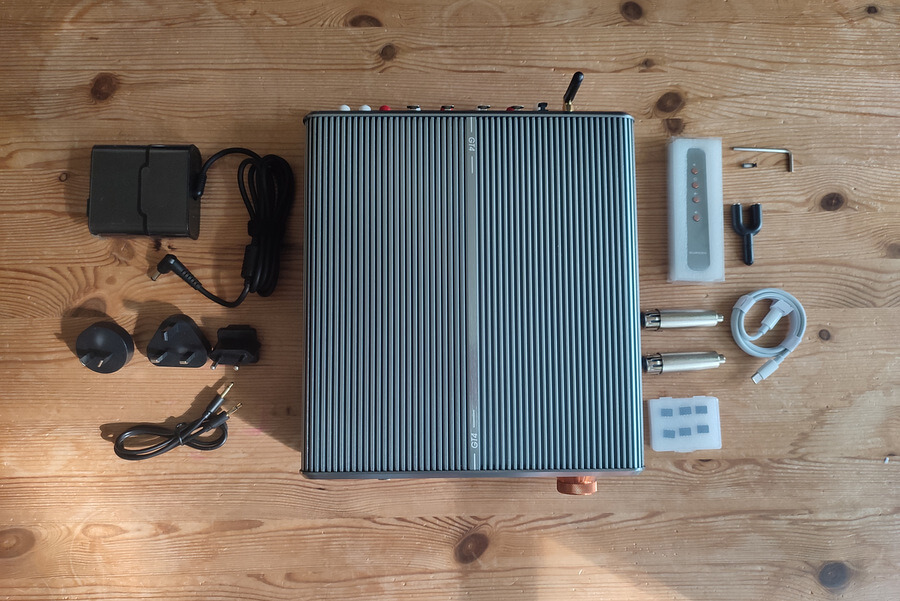
Design & Build
The Burson Audio Conductor GT4 is built like a tank but doesn’t aim for showy aesthetics. The chassis is milled from CNC-machined aluminum, which contributes to its solid 5 kg weight—sturdy, not portable, but then again, no one’s tossing this thing in a backpack. Its compact dimensions—255mm wide, 270mm deep, and 70mm tall—make it surprisingly desktop-friendly given the beastly spec sheet and heat output.
Speaking of heat, this is a fully discrete Class A amplifier, and yes, it gets hot. Really hot. Two internal fans and the ribbed casework help with thermal management, but after a couple of hours in use, surface temps can exceed 60°C. That might make some folks nervous, but it’s pretty standard fare for true Class A designs at this level of output.
The front panel centers around a satisfyingly clicky, orange digital volume knob with 99 steps of adjustment. It feels just right—resistant without being stiff. A bright monochrome OLED screen displays volume, sample rate, and input/output status. You can rotate the screen for vertical mounting, adjust its brightness, or have it auto-dim after a minute of inactivity.
Front-facing connections include a 4-pin XLR and 6.35mm headphone output, plus a 3.5mm microphone input. Below the OLED screen are four small buttons: input select, output select, settings, and screen orientation. There’s also a power button to the left.
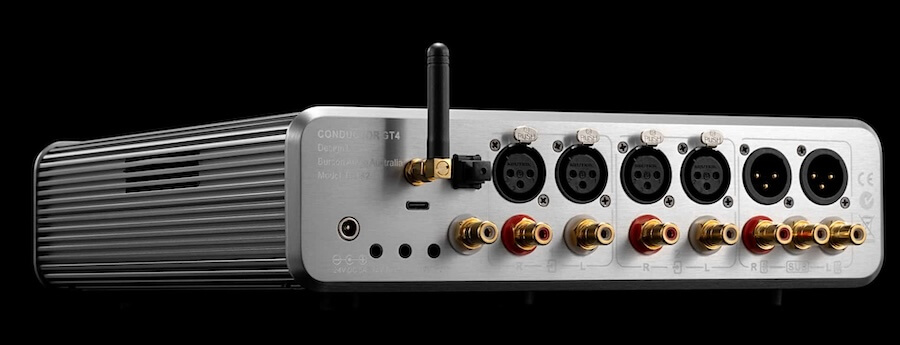
Around back, things get serious. Digital inputs include USB-C, optical, coaxial, and Bluetooth (courtesy of the Qualcomm CSR8675 chip, supporting LDAC but not aptX Lossless). Analog inputs and outputs are extensive: two sets of RCA and two sets of balanced XLR inputs, one RCA and one XLR preamp output, plus a dedicated subwoofer out. The number of analog connections is unusually high for a DAC/amp and opens the door for a ton of configuration flexibility.
All these I/O options make the Conductor GT4 a true Swiss Army knife: DAC/amp combo, standalone DAC, dedicated headphone amplifier, or even a full preamp for powered speakers or active systems. You can even run the headphone and sub outputs simultaneously for a chest-thumping hybrid listening setup that few competitors offer.
To round things out, the unit includes an aluminum remote with full control over volume, inputs, outputs, mute, and screen settings. It’s functional, solid, and a better touch than the usual plastic wand.
Burson didn’t build the Conductor GT4 to look fancy. They built it to do everything—and it does, with unapologetic efficiency.
Delving into the settings, there are more options that can be tweaked to fine-tune your listening experience:
- Gain (Low or High)
- Fir Filters (seven types, minimal sonic differences between them)
- DPLL for DSD and PCM (Off, Low, Mid and High to change the level of jitter rejection)
- Emphasis (Off by default, On rolls off treble by 5dB at 10kHz and 8dB at 20kHz)
Just as an added note, I never found a viable use for Emphasis mode. Unless you are super treble-sensitive or have a very bright pair of headphones, I suggest keeping it off.
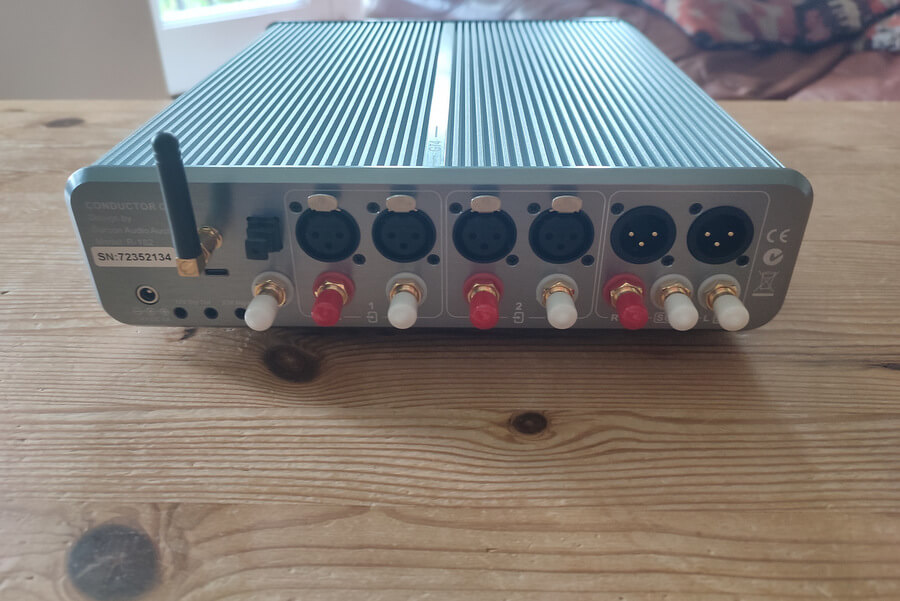
Performance & Synergy
The Burson Audio Conductor GT4 sets itself apart from other Class A amplifiers—like the Aune S17 Pro—by leaning toward neutrality with precision rather than warmth. It doesn’t sugarcoat or soften your music, but it also avoids tipping over into sharpness or fatigue. The sound is incisive, fast, and clean—think studio monitor accuracy rather than tube-warmed coloration.
Despite its reference-grade neutrality, the GT4 delivers a listening experience that feels natural and emotionally engaging. That’s the magic of a well-executed Class A design—it doesn’t need to color the sound to make it compelling. The GT4 doesn’t just dissect the music; it breathes life into it. More than once, I found myself lost in the music, forgetting I was supposed to be evaluating gear. That’s usually the first sign you’re dealing with something special.
Where the GT4 really flexes is in its dynamic performance. Both macrodynamics (big shifts in volume and impact) and microdynamics (the smallest nuances and textures) are flat-out stunning.
This is the kind of amp that makes drums slam, strings shimmer, and vocals leap forward with intensity—without ever feeling overcooked. It’s the most dynamic and controlled presentation I’ve heard in a DAC/amp combo under $4,000. Nothing feels held back or restrained; when the music demands it, the GT4 hits like a sledgehammer—then backs off with grace and finesse.
Resolution and perceived detail retrieval on the Burson Audio Conductor GT4 are top-tier, but refreshingly unforced. This isn’t one of those DAC/amp combos that feels like it’s screaming every detail at you to prove a point. Instead, the GT4 serves up its detail with finesse—letting you discover new layers in familiar tracks without ever veering into analytical fatigue. It’s precise, not preachy.
The excellence carries over into imaging and soundstaging. Thanks to its dual-mono architecture and exceptionally low channel crosstalk—significantly improved over earlier Conductor models—the GT4 presents an expansive, well-defined stage. Instrument separation is razor-sharp, with clear front-to-back layering and pinpoint left-right placement. You don’t just hear where things are; you can feel the space they occupy.
Perhaps most impressive is that the GT4 manages to sound so effortlessly complete without boosting any part of the frequency range. Bass is authoritative but never bloated. Mids are organic and uncolored. Treble is extended and airy without becoming grating. It’s the kind of sound that doesn’t scream for attention—but once you hear it, you’ll have a hard time going back.
While the bass on the Burson Audio Conductor GT4 isn’t overtly elevated, its authority and physicality are undeniable. There’s a visceral quality to the low-end that doesn’t rely on sheer quantity. Subbass in particular delivers a tight, impactful rumble that’s more felt than heard when paired with the right headphones.
On a set of Dan Clark Audio Noire X, for example, playing “Why So Serious?” by Hans Zimmer and James Newton Howard provided a chest-thumping experience that had more in common with a full-range speaker system than a desktop rig.
That tactile character continues into the midrange. Vocals and instruments are imbued with palpable weight and texture, giving them lifelike presence. There’s a liquidity to the sound that smooths out the edges without dulling the energy—an almost analog quality that draws you in and keeps you there. It doesn’t just reproduce the midrange—it animates it.
Treble is expertly controlled—silky, extended, and never harsh. There’s just enough upper energy to maintain clarity and air without ever drifting into shrillness. Even brighter recordings like Rumours by Fleetwood Mac came across with sparkle and finesse, avoiding the glassy edge you might get on more budget-conscious DAC/amps like the SMSL DO400 or JDS Labs Element IV.
The GT4 makes the price delta feel justified—this is high-end digital that doesn’t sound remotely digital.
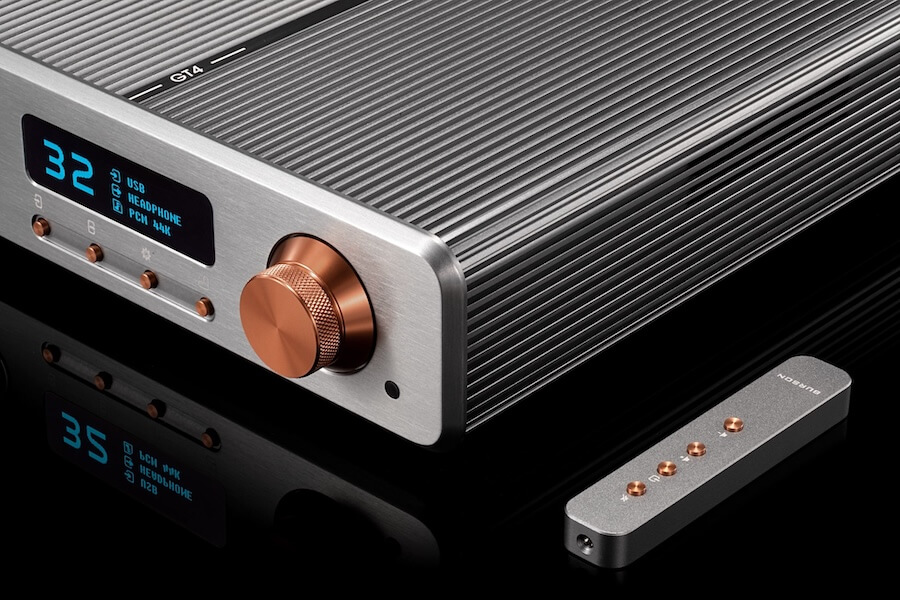
I only had access to the Super Charger 5A to power the Burson Conductor GT4, so I couldn’t do a side-by-side comparison with the standard power supply or the Fusion Core upgrade. That said, the Super Charger 5A delivered an incredibly black background and a level of effortlessness in dynamics and tonal density that felt more natural than what I’d typically associate with conventional switch-mode power supplies. From what I’ve gathered in other circles, it does make a meaningful difference over the standard unit—enough that I wouldn’t bother running the GT4 without it.
Burson also sent along a set of their older V6 Vivid opamps for comparison with the installed V7 Vivids. The differences weren’t subtle. The V6 Vivids presented a leaner, more aggressive treble that veered toward sharp on certain recordings.
Dynamics were flatter, too—more compressed, less nuanced. It wasn’t unlistenable, but once you hear the refinement and authority of the V7s, there’s no going back. The V7 Vivid opamps brought more composure, scale, and balance across the board. If you’ve got the Deluxe or Max version of the GT4, keep the V7s installed.
One of the most reassuring aspects of the GT4 is its sheer power output. Burson rates the amp at up to 10 watts per channel into 16 ohms through the balanced XLR output—and it shows. I threw everything I had at it, including the HiFiMAN HE6se V2 (which has made lesser amps cry uncle), and the GT4 didn’t even flinch. It not only drove the HE6se V2 with authority but did so with proper dynamic headroom and bass control. Unless you’re trying to resurrect a set of electrostats with jumper cables, you’re covered.
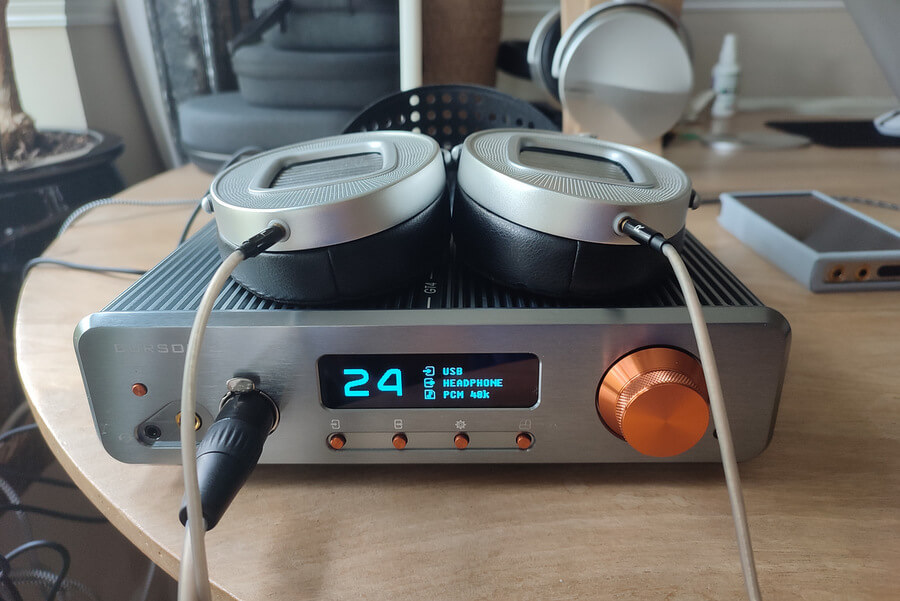
The Bottom Line
The Burson Audio Conductor GT4 (Deluxe version) is a powerhouse DAC/Amp that combines brute driving force with surgical precision. Its compact, rugged chassis hides a monstrous Class A amplifier capable of handling any headphone on the market—including the notoriously demanding HE6se V2—while delivering a reference-level listening experience with class-leading dynamics, realism, and dead-silent backgrounds. The modular design and upgradable opamps (especially with the V7 Vivids in the Deluxe and Max packages) give it real future-proof appeal.
That said, it runs hot—physically hot—and the industrial design won’t win any beauty contests. There’s also a steep price to pay for the best performance, especially once you factor in the upgraded power supplies and opamps. But if you’re shopping in the $3,000 range and want a DAC/Amp with more connectivity than most preamps, the GT4 should be at the top of your list. It doesn’t color the music, it unleashes it.
Pros:
- Powerful amplification in a small package
- A plethora of inputs and outputs for every audio need
- The ability to customise the sound with swappable opamps and filters
- Incredible sonic performance, with visceral dynamism the star of the show
Cons:
- Runs hot
- Solidly built, but doesn’t scream luxury
Where to buy:
Related Reading:

